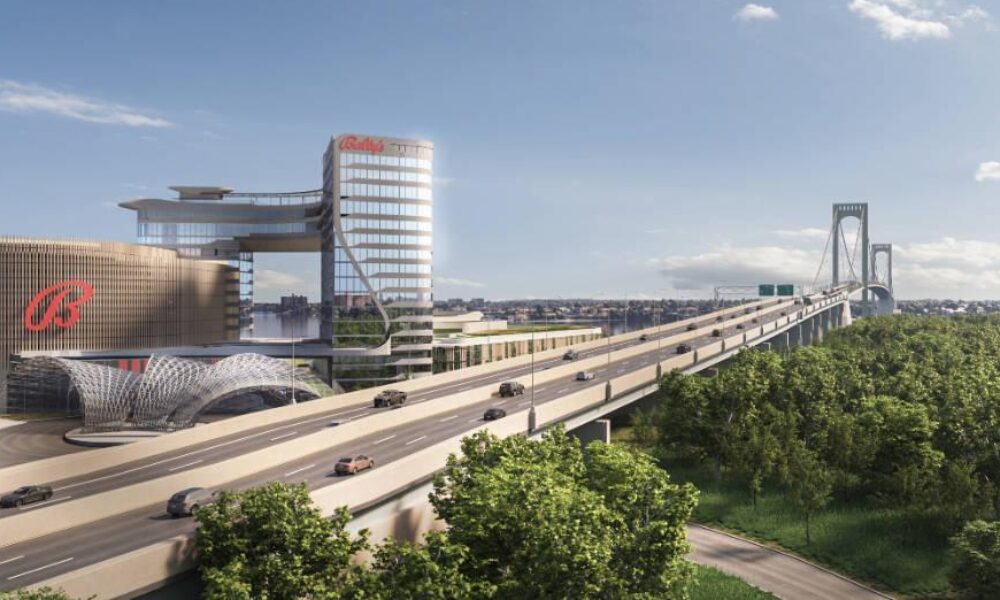“This isn’t a plan on paper. This is a ready-to-go development with community at its core,” proclaimed Bally’s Corp. Chairman Soo Kim, announcing details of Bally’s Bronx.
Bally’s offered the first look at what it proposeds for the Bronx on June 30. The company vowed it had “$2.5 billion in committed investment and letters of confidence from leading U.S. investment banks” toward the $4 billion project cost.
The company also threw down against its seven rivals for a New York City casino license. It declared itself “the only operator in contention whose board and leadership mirror the rich diversity of New York City.”
In a multi-page press release, Bally’s called its plan, to be built on the former Trump Links, “an audacious vision to develop a former landfill and transform it into an economic engine for the Bronx — the borough’s single largest private development.” It called its location, opposite the Throggs Neck Houses, “ideal,” noting that it was flanked by a 222-acre golf course and a graveyard.
Ease of access was promoted, as Bally’s Bronx would sit near two major bridges that carry 40 million cars a year on highways 295 and 678, as well as being a 20-minute ferry ride from Manhattan’s East Side. The company promised nine million casino visitors a year, 8.2 million of them from outside the Bronx.
Also forecast were $1.9 billion in statewide economic impact, $357 million in annual tax revenue, 15,000 construction 4,000 permanent jobs. The average wage for a Bally’s Bronx employee was pegged at $96,200.
Having already had its site designated as parkland by the New York Legislature, Bally’s said it was “ready to build immediately. The project’s scale, vision, and financial strength make it a formidable contender — and one uniquely aligned with the borough it will serve.”
If built, the project would cover three million square feet. That would include a 500,000-square-foot casino. The latter would host 3,500 slot machines and 250 gambling tables, including poker.
In addition to a 2,000-seat performance space, 4,600 parking spaces would be provided. Dining and entertainment venues were unspecified, beyond a vow that they would “celebrate the cuisine, art, and music that the Bronx has always offered.”
A lengthy list of community benefits included a LEED-certified design (Gold level) and $100 million worth of enhancements to the waterfront and parkland. Widened roadways and enhanced access to the Bally Links site would consume another $75 million.
Also, $10 million in public-safety commitments were announced, partly going to the creation of New York Police Department substations. Low- or no-cost access to Bally’s facilities was promised to area nonprofits and community groups.
Included in the PR brochure was a supporting statement from Elisa Toapha, described as the parent of a Preston High School student. She said, “I care deeply about opportunities for our daughters and our neighborhood. Bally’s Bronx is investing in workforce development, public space, and community partnerships that will benefit families like mine for generations. I’m proud to see this level of commitment to the Bronx.”
The architectural style of Bally’s Bronx, it was said, “honors the borough’s resilience and potential.” Concluded the company’s statement, “Bally’s Bronx is not just about gaming. It’s about giving the Bronx a platform on the global stage. It’s about delivering a landmark destination New Yorkers can be proud of and one the Bronx can call its own.”


